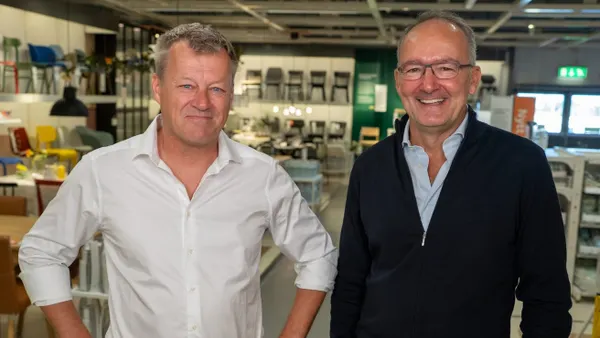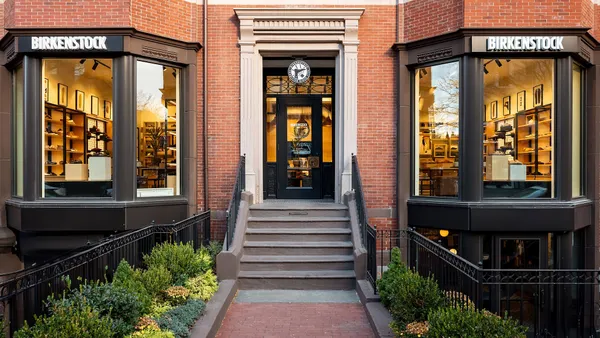Dive Brief:
- Best Buy’s domestic sales fell 13.1% from last year in the second quarter as comps fell 12.7%, according to a press release. Comp sales fell across all categories, the company said.
- Companywide, operating profit fell by more than half from a year ago to $371 million in Q2. CEO Corie Barry told analysts that the quarter brought a more promotional environment in electronics than management expected.
- The profit drop includes $34 million in restructuring costs related to employee terminations. The Wall Street Journal reported earlier this month that Best Buy has cut “hundreds” of store employees.
Dive Insight:
Best Buy’s sales and profit levels faced dual pressures in Q2. On one front, consumer spending on discretionary categories, including big-ticket electronics, has fallen in recent months in the face of steep inflation on essentials, namely food and fuel.
At the same time, discounts in the category have increased rapidly. The level of proportionality surprised management. Barry pointed to high inventory levels across the sector and at other retailers as driving price discounts. (The Best Buy chief didn’t name names, but Walmart executives, for example, have said they are working to clear inventory in electronics, among other categories.) Best Buy’s own inventory at the end of Q2 was down 6% from last year, Barry said.
All of that represents a fast, stark shift in fortunes after Best Buy rode a wave of strong electronics sales, driven by more working and entertaining at home as well as past stimulus payments that have since stopped.
“The pandemic years were kind to Best Buy with a lot of households upgrading televisions and buying new computers and tablets as society adapted to staying home more,” Neil Saunders, managing director of GlobalData, said in emailed comments. “Some of this elevated demand was simply pulled forward and, in effect, Best Buy is now suffering the hangover after the party.”
Barry said that the largest comparable sales impact in Q2 came from the computing and home theater categories. Those two categories as a whole are down 16.6% and 14.7% respectively in the U.S., Saunders noted. GlobalData research shows that 54.3% of Americans now say it is a bad time to make major electronics purchases.
Barry said on the earnings call that Best Buy’s long-term strategy has not changed as it weathers macro headwinds. It has, however, pared back staffing to lower its costs and, Barry noted, to restructure toward different operating needs. The company has also paused its share purchases, after spending $862 million so far this year on shareholders in the form of dividends and buybacks, the latter taking up $465 million in cash.
As for Best Buy’s bright spots, Barry pointed to the company’s expanding outlet stores. An outlet in the Charlotte market features an expanded assortment, a dedicated team to check quality and repair products for resale, and a services and repair hub.
Barry said the store is “performing extremely well” and is on track to make revenue on par with the conventional store the outlet replaced, with lower operating costs and higher productivity. The company is planning to double the number of its outlets to 30 in the near term. Best Buy is also experimenting with a 5,000-square-foot, digitally focused pilot store.
Best Buy is also leaning on its relatively new Total Tech Support membership. Barry said management is “encouraged” by new member signups, with half coming from new or lapsed members. The membership is also adding short-term costs and weighing on operating profit, to the tune of 100 basis points, according to the retailer’s Chief Financial Officer Matt Bilunas.














